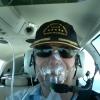Need suggestions regarding my 231 turbo/engine
-
Members Online
- M20F
- Bolter
- Aerodon
- Scooter
- Graf_Aviator
- Denis Mexted
- Patrick Horan
- Fysiojohn
- drstephensugiono
- Marc_B
- jordanjms
- MikeOH
- eman1200
- mooneydemi
- McMooney
- Philofficer
- Mobius708
- FlyingDude
- Kelpro999
- pkellercfii
- PeterRus
- good2eat
- ElkoRandy20J
- Skyland
- 303mooney
- Rsmithref
- USAFzombie
- 1980Mooney
- redbaron1982
- Griswold
- Skates97


Recommended Posts
Join the conversation
You can post now and register later. If you have an account, sign in now to post with your account.